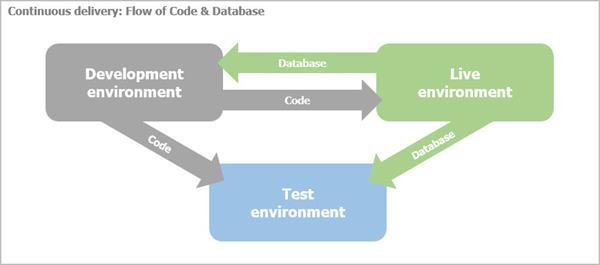Export and configurations
Configurations and settings
During delivery of source code to a Staging or Live environment some of the environment configurations need to be different. For example, API keys for different connectors and SMTP server settings, which is necessary because you do not want to spam the live accounts with test data.
Continuous delivery automates the delivery of configurations from Development to Live environments. This way, you do not need to manually apply transformation to configurations.
The following flowchart demonstrates the flow of code and database:

Export
The purpose of the export of code changes is to export only the changes to configuration, this way, it does not override configurations that are different on all environments.
Export also takes care of the database, by applying the required changes to the database structure, without overwriting changes in the database that have been done on the Live environment during runtime.